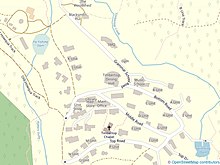
Orienteering is a group of sports that involve using a map and compass to navigate from point to point in diverse and usually unfamiliar terrain whilst moving at speed. Participants are given a topographical map, usually a specially prepared orienteering map, which they use to find control points. Originally a training exercise in land navigation for military officers, orienteering has developed many variations. Among these, the oldest and the most popular is foot orienteering. For the purposes of this article, foot orienteering serves as a point of departure for discussion of all other variations, but almost any sport that involves racing against a clock and requires navigation with a map is a type of orienteering.
John Marsden is an Australian writer and alternative school principal. Marsden's books have been translated into eleven languages.
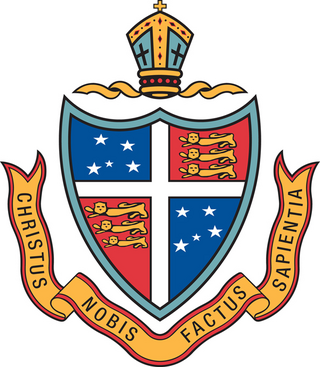
Geelong Grammar School is a private Anglican co-educational boarding and day school. The school's main campus is located in Corio on the northern outskirts of Geelong, Victoria, Australia, overlooking Corio Bay and Limeburners Bay.
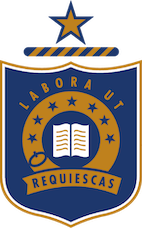
Caulfield Grammar School is a private, co-educational, Anglican, International Baccalaureate, day and boarding school, located in Melbourne, Victoria, Australia. Founded in 1881 as a boys' school, Caulfield Grammar began admitting girls exactly one hundred years later. The school amalgamated with Malvern Memorial Grammar School (MMGS) in 1961, with the MMGS campus becoming Malvern Campus.

Wesley College is a co-educational, open-entry private school in Melbourne, Australia. Established in 1866, the college is the only school in Victoria to offer the International Baccalaureate (IB) from early childhood to Year 12.
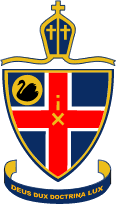
Christ Church Grammar School is a multi-campus independent Anglican single-sex early learning, primary and secondary day and boarding school for boys. Located in Perth, Western Australia, the school's main campus overlooks Freshwater Bay on the Swan River, in the suburb of Claremont.
Sir James Ralph Darling, CMG, OBE was the English-born Australian headmaster of Geelong Grammar School (1930–1961), and Chairman of the Australian Broadcasting Commission (1961–1967).

Ivanhoe Grammar School is a private, co-educational, Anglican, day school, located in Ivanhoe and Mernda, both located in the north-eastern suburbs of Melbourne, Victoria, Australia.
A selective school is a school that admits students on the basis of some sort of selection criteria, usually academic. The term may have different connotations in different systems and is the opposite of a comprehensive school, which accepts all students, regardless of aptitude.
Temasek Polytechnic (TP) is a post-secondary education institution and statutory board under the purview of the Ministry of Education in Singapore.

Mount Stirling is a mountain in the Victorian Alps of the Great Dividing Range, located in the Hume region of Victoria, Australia. The mountain has an elevation of 1,747–1,749 metres (5,732–5,738 ft) above sea level.
Scots All Saints College is a multi-campus independent Presbyterian Church co-educational early learning, primary, and secondary day and boarding school, with two campuses in Bathurst New South Wales, Australia. Formed in 2019 through a merger of The Scots School, Bathurst which was founded in 1946, and the former All Saints' College in Bathurst which was founded in 1874. The college provides a religious and general education to approximately 800 children covering early learning through Kindergarten to Year 12.

Lauriston Girls' School is a private, non-denominational, day school for girls, located in Armadale, an inner south-eastern suburb of Melbourne, Victoria, Australia.
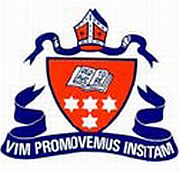
All Saints' College was an independent, co-educational Christian college in the Anglican tradition. It was established in 1874, and closed in 2018 to merge with The Scots School, Bathurst, to form Scots All Saints' College, with campuses in Bathurst and Lithgow, New South Wales. Up until its merger, the college catered for day students from pre-kindergarten to Year 12, and boarders from Years 7 to 12.
Eric Philips OAM is an Australian polar explorer, adventurer and polar guide.
Rovering in Victoria is part of Scouting in Victoria and is predominantly the Rover section of Scouts Australia in Victoria, Australia, which is run by the Victorian Branch Rover Scout Council. At the 2012 Census, there were 1033 registered Rover Scouts in Victoria, in roughly 100 Rover Crews.
Edward Hugh Montgomery was an Australian politician and teacher.

Cameron Rahles-Rahbula is a former Paralympic alpine skier from Australia. He won two bronze medals at the 2010 Winter Paralympics in Vancouver. He represented Australia in four Paralympics, stating with the 2002 Winter Paralympics in Salt Lake City and the 2006 Winter Paralympics in Torino. He did not compete in any events at the 2014 Winter Paralympics in Sochi due to knee and ankle injuries sustained during the warm up for the downhill event of the Games but carried the Australian flag in the Parade of Nations at the Opening Ceremony. He also won two gold medals and a silver medal at the 2004 IPC Alpine Skiing World Championships in Wildschönau, Austria, and a gold and a bronze medal at the 2009 World Championships in Jeongseon, Korea. He retired after the Sochi Games.
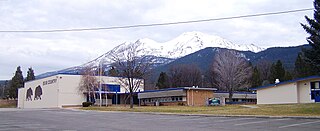
Mt. Shasta High School is a public high school located in Mount Shasta, California in southern Siskiyou County. It is one of the five members of the Siskiyou Union High School District. Mt. Shasta High school's mascot is a bear and the rivaling team is the Weed High School Cougars.

